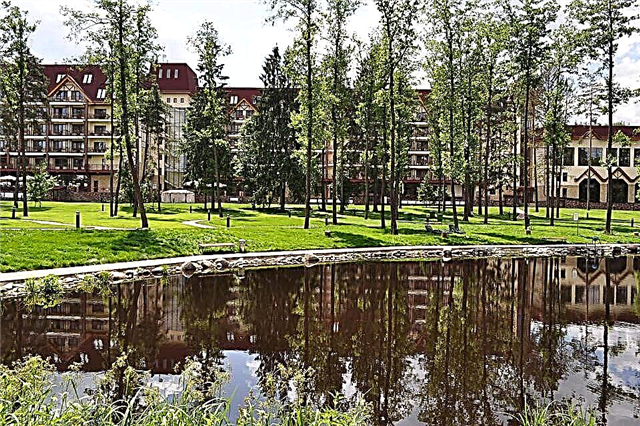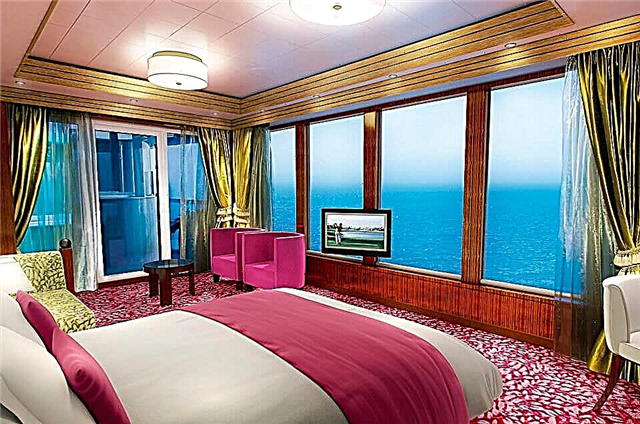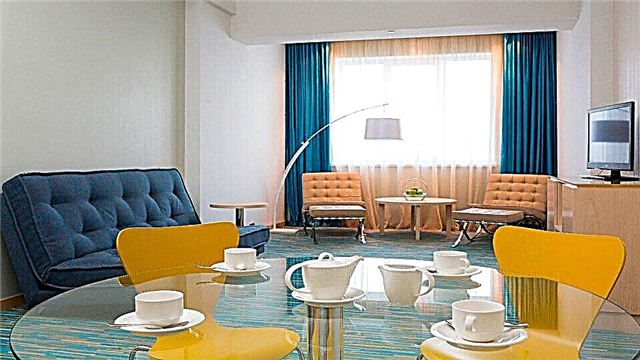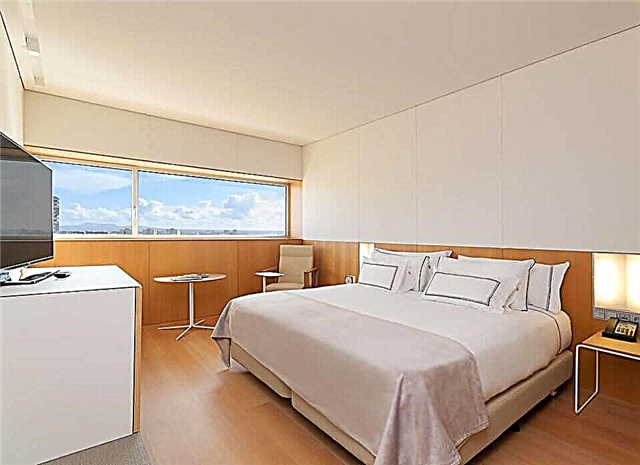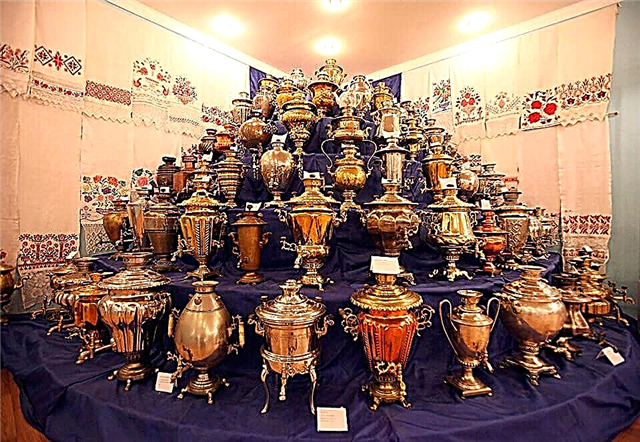The Tula region has a truly colorful history. Many traditional crafts, such as the production of gingerbread or the manufacture of samovars, got their start right here. That is why the sights of Tula are so diverse and interesting in cultural, historical and even national aspects. We will tell you where to go and what to see first. And with the help of our review, you can make an interesting route plan around the city.
Tula Kremlin

The Tula Kremlin appeared just five years after the city fell under the control of the Moscow princes. Then it was a powerful, oak fortress, which was supposed to become the main outpost on the Crimean Tatar route. Today this large monument of defensive architecture has turned into a huge museum. The architecture of the Kremlin bizarrely combines features of traditional Russian architecture and the western format of fortifications.
In addition to the regular fortress in the shape of a regular rectangle, the territory also houses a shopping arcade, several cathedrals and even a twentieth-century city power plant. The entrance to the territory of the Kremlin is free. Additional payment is required only if you want to use the services of a guide. The Kremlin is open to the public from 10:00 to 20:00; on weekends, the working day is reduced by two hours. The complex is closed to the public on Monday.
Assumption Cathedral of the Tula Kremlin

This cathedral makes a refreshing impression. A majestic building filled with light, rich in decor and richness of detail. The cathedral looks like a magic box in which fairy tales are locked, because of its many symbolic bas-reliefs and complex multi-colored ornaments. It instantly stands out against the background of other religious buildings in the Kremlin with its unusual light lilac color. Initially, a small wooden church stood on the site of the cathedral, but at the beginning of the seventeenth century it was decided to rebuild it in stone.
The moment was chosen perfectly - later the baroque was rapidly losing its position, and classicism had not yet found its completeness. If the external design of the temple is sustained in exquisitely strict forms, then the internal premises are exemplary Russian Baroque with a white-stone double-headed eagle in the center, rich stucco and numerous floral ornaments.
Epiphany Cathedral of the Tula Kremlin

This cathedral appeared much later than the Assumption. At that time, residents needed a new, warmer church to counterbalance the "cold" Assumption Cathedral, which could not be heated in winter. So, on the site of the premises in which military training took place, it was decided to build a cathedral named after the Epiphany. The cathedral still has an amazingly homely atmosphere of quiet joy. Perhaps this impression is created due to the fact that only Russian masters participated in its construction - many of them were local residents.
If the Assumption Cathedral is famous for its bas-reliefs, then the Epiphany Cathedral can be proud of its murals - not only the walls are painted from floor to ceiling, but also the dome. To keep the cathedral from getting cold, two huge ovens were erected. The Soviet authorities treated the cathedral especially cruelly - it was not only closed, but mercilessly plundered. The small chapters of the temple were almost immediately demolished, and the colorful murals were smeared over. A faded ghost remained from the cathedral. Restoration work is still underway.
All Saints Cathedral

The bright and elegant bell tower of the cathedral with a high spire is visible from almost any corner of the city, which is why the contrast between the delicate architecture of this temple, frozen on the verge between the pomp of the Baroque and the sophistication of early Russian classicism, and the ancient graves that surround the cathedral, is even more clearly noticeable. The fact is that the first - then still wooden - church was erected in the cemetery to serve the funeral service for the dead.
Gradually, the temple was rebuilt in stone, but the number of graves became more and more - ancient tombstones, starting from the seventeenth century, overgrown with moss and huddled in the shadow of sad statues of angels - this place resembles an ancient necropolis somewhere in England. The cathedral contains an ancient relic - the Kazan icon of the Mother of God, as well as the wondrous image of Nicholas the Wonderworker of the Athos letter. The temple is open to the public from 6:30 am to 7:00 pm.
Nikolo-Zaretskaya Church

In pre-revolutionary times, this temple was one of the richest in the city. Initially, there were two small wooden churches on the site of a modern stone church. It is noteworthy that most of their parishioners were gunsmiths. The construction of a stone church was initiated by the Demidovs, who, as you know, had huge funds. Apparently, a metropolitan architect was invited to work on the project, however, the name of the master has not survived in history.
The Nikolo-Zaretskaya Church with its smooth walls, simple, but at the same time elegant decor is strikingly different from similar buildings of the early eighteenth century. It is designed in the style of the Peter the Great Baroque and resembles a palace rather than a temple structure. In the church today, despite the surviving fire and destruction of the church in Soviet times, the items brought here by the Demidovs have been preserved: a cast-iron altar, chandeliers made of Ural copper. The church can be visited from 7:00 to 18:00.
Central Park of Culture and Rest. Belousova

Walking today along a huge green area or relaxing on the banks of one of the three ponds, it is difficult to imagine that once upon a time there was a dump on the site of this green and such a cozy park. At one time, the expansion of the city began to occur more and more rapidly, and its sanitary condition deteriorated. So, at the very end of the nineteenth century, on the initiative of Peter Belousov, the dump was covered with fresh soil, and with the onset of spring it was planted with trees.
Today, various recreational areas are concentrated in the central park. So, foxes, rabbits, goats and roe deer live in the zoo corner on a permanent basis. White and black swans can be seen on the shores of the lakes. The modern sports area smoothly transforms into a complex of extreme and family attractions "Drive". Adults can visit a fairy tale immersed in virtual reality imitation, while children can visit a fairy tale in their physical body - "Fairy Kingdom" is the largest free children's town.
Tula State Museum of Weapons

The museum contains large-scale weapons collections that allow you to visually trace how exactly the approach to the manufacture of weapons changed from the end of the sixteenth century to modern times. This museum appeared thanks to the efforts of the arms factory, from which, at the end of the nineteenth century, the initiative to open the museum fund came. The real pride of the museum are guns, which were made especially for members of the royal family.
Today museum funds are housed in two buildings. One is located on the territory of the Kremlin and previously belonged to the Epiphany Cathedral, while the second is the original project of Bedrina, Shatokhin and Zhezhoma, which differs in its appearance - this round building ends with a dome in the shape of a hero's helmet. Both buildings work according to the same schedule: Monday is a day off, on Tuesday, Wednesday and Sunday they are open for visits from 10:00 to 18:00, on the remaining days the museum closes at 21:00.
Memorial "Defenders of Fatherland Heaven"

This memorial complex is located right at the entrance to the city. It was erected on the 71st anniversary of the victory over fascism. The structure is striking in its scope - its diameter is almost 100 meters, and its height is 27 meters.The monument consists of two key elements - the La-5FN aircraft, a fighter hovering at its highest point, and the Rama aircraft, which is located directly at the ground. Both cars are made in full size. The authors of this project took as a basis a very real episode of the Great Patriotic War, which took place in the sky over the city, when two enemy aircraft were shot down by Ivan Vishnyakov.
Museum "Tula Gingerbread"

The sweetest museum always makes its guests feel welcome. It is not difficult to guess what the expositions of this museum will be devoted to - here you will find all possible types of gingerbread: congratulatory, nominal, honorary, curly. There is also a record-holder gingerbread - its weight is 50 kilograms. Among the museum exhibits there are really valuable specimens - they were made according to the shapes of the most famous gingerbread in Russia, Konstantin Shchukin.
At one time, his sweet masterpieces could be bought not only in Tula, but also in Paris - the French highly appreciated the talent of this man. It was thanks to his granddaughter that the museum's exposition was replenished with rare photographs, documents, and gingerbread molds. The museum is open to the public from 10:00 to 17:00 by appointment only.
Museum "Tula Samovars"

Almost from its very opening at the end of the twentieth century, the museum has become a visiting card. His expositions were designed to clearly demonstrate how slowly the trends in the production of samovars in the Tula region were changing, starting from the eighteenth century. Samovars were considered not so much as household items, but as unique and completely original samples of decorative and applied art. This approach to the organization of museum funds continues to this day.
The exposition has expanded significantly thanks to the emergence of a new section dedicated to "samovar" dynasties. The building, which houses the museum funds, is itself a monument of architecture in the classical style. It was erected for the arrival of Emperor Alexander II in the city. The museum is closed on Monday. On Thursdays, Fridays and Saturdays, it is open from 10:00 to 20:00, on the remaining days the museum closes two hours earlier.
Museum "Moto-Auto-Art"

This museum is a kind of continuation of the private collection of Leonid Zyakin, who unofficially opened this institution for a wide range of guests more than thirty years ago. Initially, there was no clear opening hours or fixed ticket prices, but fans of motorcycles continued to come here. It is noteworthy that today almost all of the museum's exhibits have been brought to working order. Some had to be restored according to drawings, it was more difficult if the drawings were missing.
Mechanics had to assemble motorcycles literally from old photographs. All exhibits were selected with great care. There are really rare models here, for example, the notorious L-300, which is a living legend of domestic motorcycle production. The museum is now officially registered. It is open daily from 11:00 to 18:00, except Monday.
Art Museum

The museum was opened in the first quarter of the nineteenth century. Its building was designed by the Tula architect Zaitsev. He was entrusted with a great responsibility - to create a building in which more than 23 thousand works of art will be stored. Such a large fund made the Tula Museum of Fine Arts one of the largest in Russia. Museum guests can get acquainted with the works of Russian masters of the 16th-20th centuries. There is also a rich collection of Italian, Dutch and French painting of the 16th-19th centuries.
The museum has an excellent reputation not only in Russia, but also abroad. Many exhibits have been exported to exhibitions in France, Sweden, Spain, USA and other countries more than once. Tourists can visit it on any day except Monday. The doors are hospitably open from 10:00 to 20:00 on Thursdays, Fridays and Saturdays, on other days the museum closes two hours earlier.
Necropolis of the Demidovs

The necropolis is dedicated to the legendary noble family, whose natives became famous industrialists, patrons of art and gunsmiths. Its building is located on the territory of the historical buildings of the city. Once upon a time, the Kuznetskaya Sloboda was located on this place. In the center of the necropolis there is a family tomb from the first half of the eighteenth century. There are no more similar intra-temple structures belonging to dynastic families on the territory of Russia. The ensemble of the temple, which houses the tomb, is made in the style of St. Petersburg Baroque.
It is ideally complemented by a bell tower, which is more reminiscent of the Suzdal belfries. The exposition of the museum includes not only artifacts associated with the Demidovs, but also samples of weapons, unique samples of lock and hardware art, as well as measuring instruments of the nineteenth century. A ticket to the museum will cost 100 rubles. You can visit it from 10:00 to 20:00 from Thursday to Saturday, Monday is a day off. On the remaining days, the museum closes at 18:00.
Monument to Lefty

It is not surprising that it is in one of the oldest centers of arms craftsmanship in Russia that a monument to Lefty appeared - a folk craftsman who, as you know, even managed to shoe a flea. The monument was erected on the initiative of the machine-building plant on its fiftieth anniversary. The project was led by the former head of the communications department of the same plant.
For a long time, the monument was located directly on the territory of the enterprise, but soon it was handed over to the city authorities as one of the symbols of the city. If you look closely at the figure of Lefty, it will become noticeable that he is depicted squinting slightly. The DM looks at how well he did his job, and from his somewhat proud posture, it becomes clear that the job was done excellently!
Monument "Taming the Flea"

Continuing the theme of fleas that just needed to be shod, another unusual monument appeared in the city, offering a slightly different view of the events described in the famous episode. The monument is made in a hyperbolic form. The plot has remained the same - there is a master and there is, in fact, a flea, only the latter is almost twice the size of a person. At the same time, she looks a little like an ordinary insect with all the cogs, wheels and other mechanized details that can be noticed by looking a little more closely at her avant-garde figure.
Igor Zolotov, the author of the project, explained with a laugh that the flea had to be enlarged so that the notorious carnation and Lefty's signature could be examined in detail. However, the monument also has a deeper meaning: Lefty is a truly brilliant master who can shoe not only a tiny insect, but almost a giant.
Monument to Tula gingerbread

On the central Lenin Square there is a fairly large monument to the Tula gingerbread. It is made of bronze and is a stylized disc with a diameter of two and a half meters. Its weight is more than a thousand kilograms, and it is simply impossible not to notice this sculpture. Due to the fact that Tula gingerbread has been a visiting card for centuries, tourists always come here to take a couple of photos.
If you look closely, you can see the engraved inscription “1685” on the back of the monument. This is not the date the monument was erected, as one might first think. In fact, the monument appeared in the city just ten years ago. No, in 1685, according to official documents, the first Tula gingerbread appeared in Russia.
Sculpture "Tula Tea Party"

Not far from the temple of Sergei Radonezhsky for the 868th anniversary of Tula, a new sculpture was installed, from which it literally breathes with coziness. It fully lives up to its name. In the center of the composition are a man and a woman who are about to start drinking tea.On the table in front of them is a samovar and a vase of gingerbread - traditional crafts for the Tula region.
The girl listens with pleasure as the guy plays the accordion. A cat and a dog lie at their feet. It is noteworthy that the table has a free chair - anyone can join the tea party. This sculpture was intended to symbolize the cordiality and hospitality with which the city greets each of its guests.
Reserve "Tula Zaseki"

A historical reserve with a rich past. As you know, a cut-down forest is called a serif, which is an impenetrable jungle. Tula notches appeared through the efforts of the Moscow princes in the sixteenth century in an attempt to secure their borders from the Crimean Tatars. The modern reserve is located exactly on the site of the so-called Zasechnaya line. Since the times of the Great Northern War, notches have not been used for fortification purposes, but due to the density of local forests, people have not been able to adapt these territories to themselves.
As a result, a unique ecosystem with many relict trees, animals and birds was formed on the territory of the reserve. Twice they tried to destroy the reserve in a barbaric way: during the Civil War, when the city was experiencing a coal shortage, and during the Second World War, when the bombing began.
At the moment, there is an active restoration of the reserve, namely the Krapivensky reserve, which is the oldest component of the Tula zaseki. You can go for a walk around the reserve on your own, or you can wait for one of the excursions. Walking in the company of a specialist will give you a completely different look at the local flora and fauna.
Exotarium

The Exotarium was founded at the end of the nineteenth century. Today this place is world famous due to the fact that local experts have repeatedly sought to breed offspring from really rare, and sometimes little-studied animals. Today the Exotarium contains one of the world's largest collections of snakes.
In addition to the anacondas and the world's largest reticulated python, huge land turtles, various lizards, monitor lizards, chameleons and many others also live here. In summer, the exotarium is open from 12:00 to 20:00 on Mondays and Tuesdays and from 10:00 to 20:00 on other days. In winter, it closes at 18:00.
Circus

The first circus appeared in the city at the end of the nineteenth century. Then a huge wooden building was built on the central street of the city. This is how the history of one of the oldest circuses in Russia began. The circus building that we see today was built relatively recently - about half a century ago, and the next year after the completion of construction, the artists returned with a new program.
Often, the circus hosted foreign artists, and the main circus cast dozens of times sold out at arenas in France, Italy, and Germany. The circus is open from 09:00 to 18:00. The program is constantly expanding. Today, here you can see not only enchanting performances with taming predators, but also an insanely bright motorcycle show. The cost of tickets depends on which seat you prefer to take.
Polenovo Estate Museum

Vasily Polenov, a famous Russian artist, personally worked on sketches of the estate, in which he was to live for many years. This light, graceful building is located on the picturesque bank of the Oka. The artist took an active part in the construction of the house and its decoration. Most of the trees that adorn the huge garden were planted by Polenov himself. The estate was lucky to survive the Civil War and two world wars. Only minor buildings were lost, which in no way affected the integrity of the perception of this architectural monument.
The manor complex includes a number of buildings: the Admiralty used to store boats and tackle, and now it hosts exhibitions and art evenings; in the City of Craftsmen there is the main exhibition hall; The abbey - the artist's former personal studio - has become an interactive stage. The museum is open from 11:00 to 18:00. The days off are Monday and Tuesday.
Mother of God Palace Museum and Park

The modern Mother of God Museum is located in a building built by order of Catherine the Great for her illegitimate son. The great architect Starov was engaged in the construction of the palace, as well as the design of the luxurious park area. The snow-white building in the style of early classicism is rightfully considered the architectural pearl of the Tula region. The expositions of the museum fully correspond to the elegant consistency of the palace: collections of porcelain, items made of precious stones, unique sculptural compositions, a rich collection of paintings.
The museum ensemble also owns the tower, whose architect remains unknown, as well as the Kazan Church. The guests of the palace inspect the park area with a picturesque pond with no less interest. The play of the sun on a normally calm surface becomes the subject of general admiration. Monday is a day off. On Thursdays, Fridays and Saturdays, the territory is open on the day of visit from 9:15 to 20:00, on other days the palace closes at 18:00.
Museum complex "Kulikovo field"

A unique project in the style of postmodernism was intended to combine the rich historical materials that are devoted to the battle on the Kulikovo field, and brighter ideas that modernity wants to see. The complex is located in close proximity to the battlefield itself. First, the guest of the museum plunges into the atmosphere of the "Legend of the Mamayev Massacre", and only then, in the company of an experienced guide, he subjects this event to a thorough analysis.
A special place in the complex is occupied by a pyramid showcase, in which the realities of the sixteenth century are reconstructed, when Russian troops crossed the Don. In winter, the complex is open from 10:00 to 16:00, in summer - from 10:00 to 19:00. In the off-season, it closes at 17:00. The day off is Tuesday. This does not apply only to the summer period, when the museum is open to the public all week. A number of institutions lead the museum complex.
Station-Museum "Kozlova Zaseka"

Kozlova Zaseka is quite a working railway junction, where trains of different distances arrive every day. But recently, this station has turned into a museum. Usually, the museum station is not visited as part of a self-guided tour.
It is enough that her visit is included in most of the excursion programs dedicated to Yasnaya Polyana. And the exposition of the museum is not so large-scale - half an hour will be enough to inspect everything in detail. However, one should not refuse the opportunity to see the old station as Leo Tolstoy saw it.
He regularly visited here to pick up mail, it was from here that he called his numerous friends and it was here that the coffin with the great Russian writer was brought. Thanks to the efforts of historians and literary scholars, the station was restored to its original appearance.
For work, the archives were raised, hundreds of photographs were viewed. Today, neat rooms with wooden benches, tracery mirrors, inscriptions in the old, pre-reform version of the Russian language create an amazing atmosphere. Open for tourists from 09:00 to 16:30. Monday and Tuesday are days off.
Yasnaya Polyana

As you know, Yasnaya Polyana is the same estate where Leo Tolstoy lived. There is no need to introduce this person or talk about his very special attitude to this place. These facts are widely known. This vast museum complex consists of several buildings, each of which has been preserved in its historical appearance. This is the Tolstoy house-museum itself, which contains old books, which are forbidden to touch due to their age, and the Volkonsky house - the oldest component of the complex, built in the spirit of eclecticism, and the Kuzminsky wing.
A birch alley, picturesque ponds and even a shop where Tolstoy liked to rest - all this can be seen by paying for a ticket.Unfortunately, he does not give the right to enter the museum itself. His visit is purchased together with the excursion program. Memorial buildings are open from 10:00 to 15:30 on all days except Monday.





